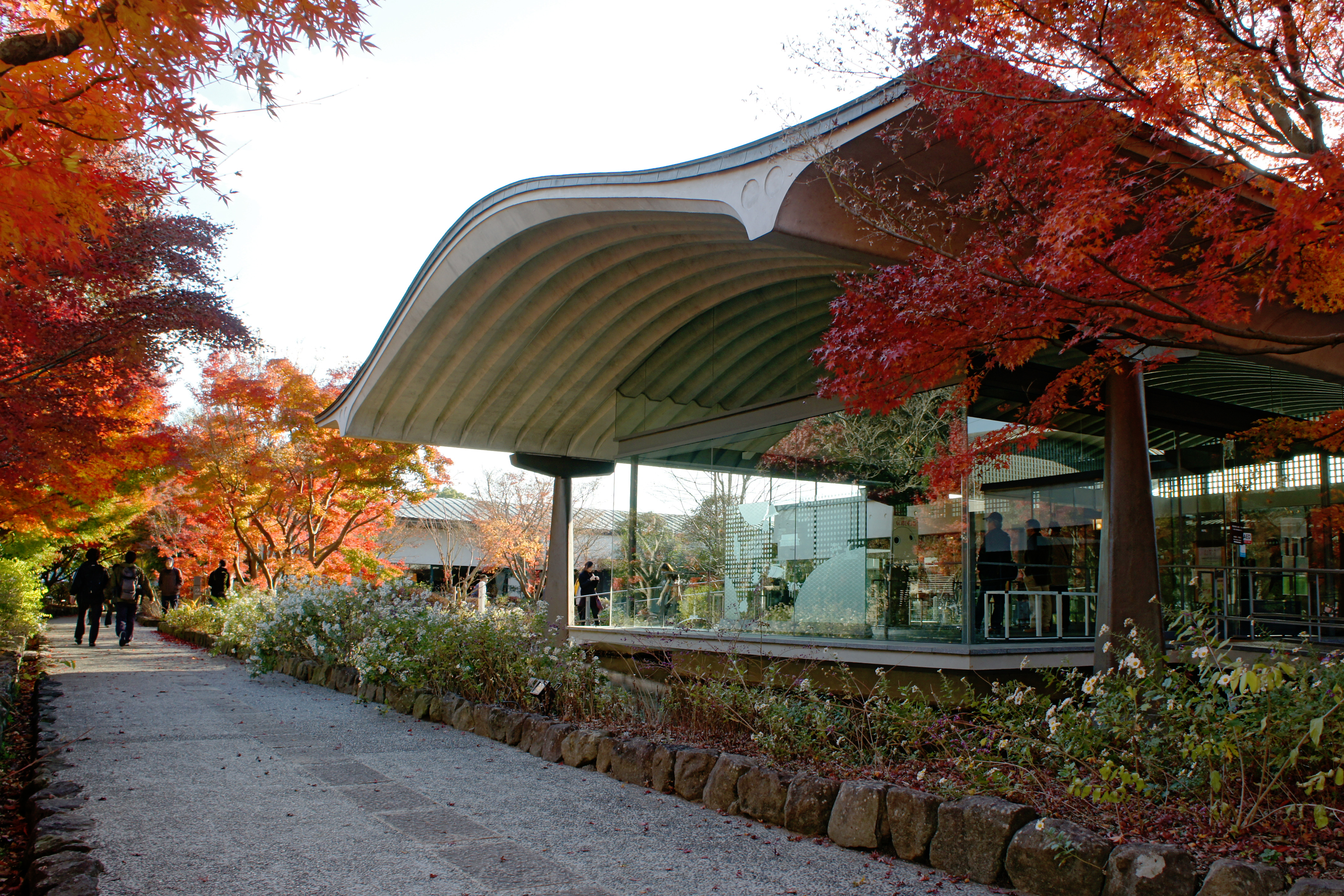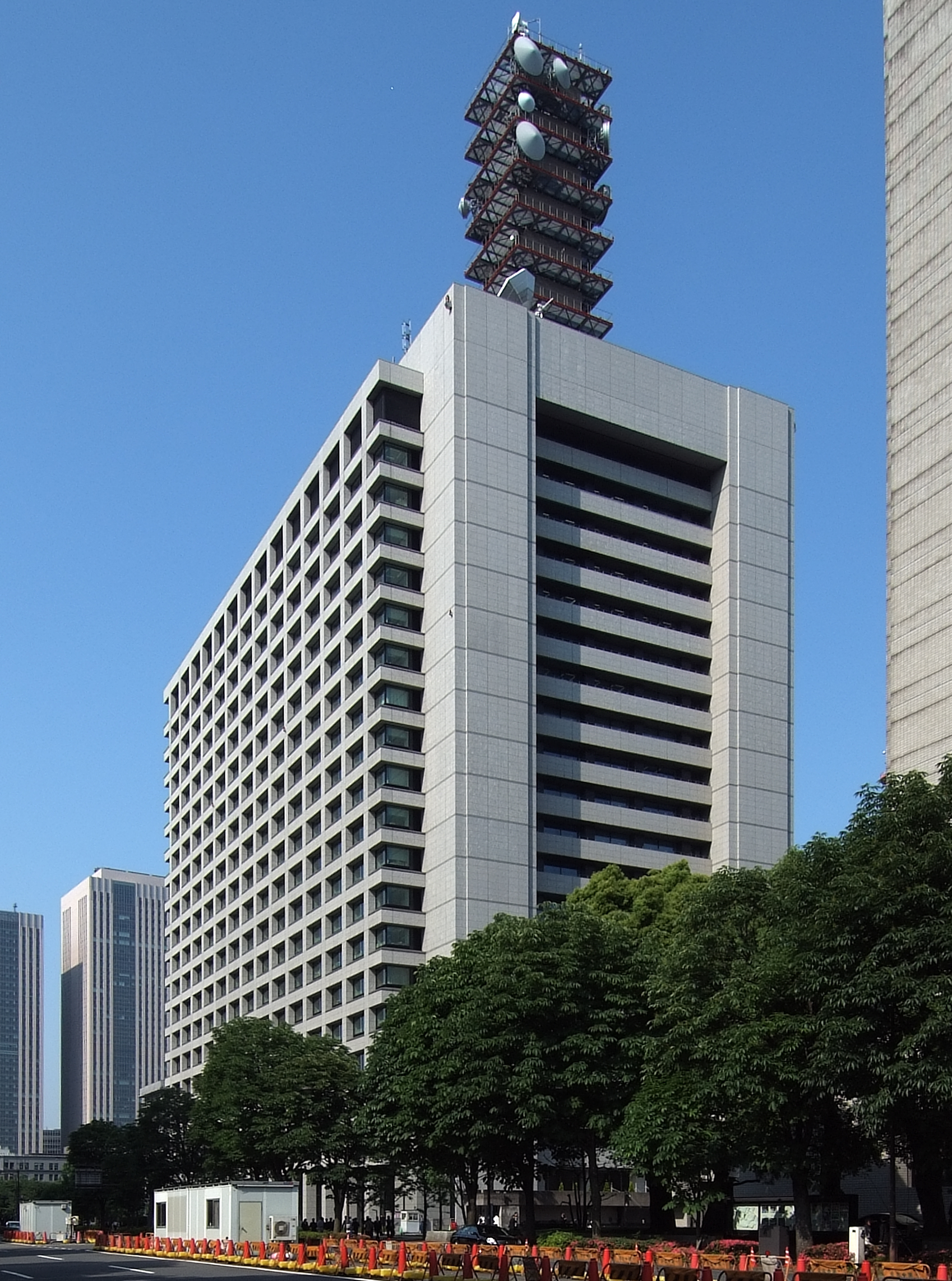|
Uji Station (Keihan)
is a train station on the Keihan Railway Uji Line in Uji, Kyoto Prefecture, Japan, and it is the terminal station on the Uji Line. The station building, designed by architect Hiroyuki Wakabayashi, was awarded the Good Design Award in 1996. In 2000, the station was selected as one of "Best 100 Stations in Kinki Region" by Kinki District Transport Bureau of the Ministry of Land, Infrastructure, Transport and Tourism. Layout The station has an island platform with two tracks on the ground. Surroundings *Uji Bridge * Ujigami Shrine *Agata Shrine *The Tale of Genji Museum The Tale of Genji Museum is in Uji, Kyoto, Japan. It displays the world of the early 11th century Japanese classic novel A novel is a relatively long work of narrative fiction, typically written in prose and published as a book. The prese ... * Kōshōji * ByōdōinTsūen Tea* Uji Station (JR West) Adjacent stations References External links Station information by Keihan Electric Railway ... [...More Info...] [...Related Items...] OR: [Wikipedia] [Google] [Baidu] |
Uji, Kyoto
is a city on the southern outskirts of the city of Kyoto, in Kyoto Prefecture, Japan. Founded on March 1, 1951, Uji is between the two ancient capitals of Nara and Kyoto, Kyoto, Kyoto. The city sits on the Uji River, which has its source in Lake Biwa. Uji has a population of 179,630 and is the second largest city in Kyoto Prefecture. It has an area of 67.54 km2, giving it a population density of 2,660 persons per km2. History In the 4th century the son of Emperor Ōjin established a palace in Uji. Three Battle of Uji (other), battles of Uji-gawa took place here in 1180, 1184 and 1221. ''Shōgun'' Ashikaga Yoshimitsu (1358–1408) promoted cultivation of Uji tea in the area. Since then Uji has been an important production and distribution center of superior quality green tea. Tsuen tea has been served since 1160 and is still sold in the oldest tea shop in Japan and possibly the world—the Tsuen Tea, Tsuen tea shop. The final chapters of ''The Tale o ... [...More Info...] [...Related Items...] OR: [Wikipedia] [Google] [Baidu] |
Island Platform
An island platform (also center platform, centre platform) is a station layout arrangement where a single platform is positioned between two tracks within a railway station, tram stop or transitway interchange. Island platforms are popular on twin-track routes due to pragmatic and cost reasons. They are also useful within larger stations where local and express services for the same direction of travel can be provided from opposite sides of the same platform thereby simplifying transfers between the two tracks. An alternative arrangement is to position side platforms on either side of the tracks. The historical use of island platforms depends greatly upon the location. In the United Kingdom the use of island platforms is relatively common when the railway line is in a cutting or raised on an embankment, as this makes it easier to provide access to the platform without walking across the tracks. Advantages and tradeoffs Island platforms are necessary for any station with m ... [...More Info...] [...Related Items...] OR: [Wikipedia] [Google] [Baidu] |
Railway Stations In Kyoto Prefecture
Rail transport (also known as train transport) is a means of transport that transfers passengers and goods on wheeled vehicles running on rails, which are incorporated in tracks. In contrast to road transport, where the vehicles run on a prepared flat surface, rail vehicles (rolling stock) are directionally guided by the tracks on which they run. Tracks usually consist of steel rails, installed on sleepers (ties) set in ballast, on which the rolling stock, usually fitted with metal wheels, moves. Other variations are also possible, such as "slab track", in which the rails are fastened to a concrete foundation resting on a prepared subsurface. Rolling stock in a rail transport system generally encounters lower frictional resistance than rubber-tyred road vehicles, so passenger and freight cars (carriages and wagons) can be coupled into longer trains. The operation is carried out by a railway company, providing transport between train stations or freight customer facili ... [...More Info...] [...Related Items...] OR: [Wikipedia] [Google] [Baidu] |
Uji Station (JR West)
is a train station located on the Nara Line in Uji, Kyoto Prefecture, Japan, operated by West Japan Railway Company (JR West). This station administrates all intermediate stations on the Nara Line. It has the station number "JR-D09". Layout Originally, there was a side platform and an island platform serving three tracks. Both these and the station building were at ground level. The station was rebuilt in 2000 with two island platforms serving four tracks and a new station building designed imitating the Phoenix Hall of Byōdō-in, a major tourist attraction in Uji. Platforms History Station numbering was introduced in March 2018 with Uji being assigned station number JR-D09. Passenger statistics According to the Kyoto Prefecture statistical report, the average number of passengers per day is as follows. Adjacent stations Surrounding area *Uji City Hall * Byōdō-in *Agata Shrine * Ujigami Shrine *Uji Bridge * Uji Station ( Keihan Railway Uji Line The is ... [...More Info...] [...Related Items...] OR: [Wikipedia] [Google] [Baidu] |
The Tale Of Genji Museum
The Tale of Genji Museum is in Uji, Kyoto, Japan. It displays the world of the early 11th century Japanese classic novel A novel is a relatively long work of narrative fiction, typically written in prose and published as a book. The present English word for a long work of prose fiction derives from the for "new", "news", or "short story of something new", itsel ... '' The Tale of Genji'' with projected images, models, and exhibitions. The culture of the Imperial Court of the Heian period, the aristocrats' costumes, and the furnishings of their residences are shown. The last ten chapters of ''The Tale of Genji'' are set in Uji; the hero is Kaoru Genji (a son of Hikaru Genji). The story of these chapters is reproduced with great realism using a scrim and life-size set. Visitors are introduced to the story line and main characters. A short film based on the "Uji chapters" and created solely for the museum is presented in the movie room. There is a library with a collect ... [...More Info...] [...Related Items...] OR: [Wikipedia] [Google] [Baidu] |
Ujigami Shrine
An is a guardian god or spirit of a particular place in the Shinto religion of Japan. The ''ujigami'' was prayed to for a number of reasons, including protection from sickness, success in endeavors, and good harvests. History The ''ujigami'' is thought to have been more important only since the eighth century. In its current form, the term ''ujigami'' is used to describe several other types of Shinto deities. Originally, the term ''ujigami'' referred to a family god. It is believed that, at first, these deities were worshiped at temporary altars. After the Heian period, the Japanese manorial system was established and nobles, warriors and temples had their own private land, the family-based society fell out of use, and belief in ujigami diminished. In turn, the lords of the manors began to pray to the deities to protect their land. These guardian deities were referred to as . In the Muromachi period the manorial system declined, and so the guardian deities were enshrined ... [...More Info...] [...Related Items...] OR: [Wikipedia] [Google] [Baidu] |
Ministry Of Land, Infrastructure, Transport And Tourism
The , abbreviated MLIT, is a ministry of the Japanese government.国土交通省設置法 , Ministry of Internal Affairs and Communications. It is responsible for one-third of all the laws and orders in Japan, and is the largest Japanese ministry in terms of employees, as well as the second-largest executive agency of the Japanese government after the . The ministry oversees four external agencies including the Japan Coast Guard and the Japan Tourism ... [...More Info...] [...Related Items...] OR: [Wikipedia] [Google] [Baidu] |
Hiroyuki Wakabayashi
is a Japanese architect. One of his first major notable works was a pickle shop in his native Kyoto in 1990, followed by Humax Pavilion in Tokyo's Shibuya. His 1995 design for the '' Rapi:t'' express train that links Osaka's Namba Station with Kansai International Airport won the Blue Ribbon Award. He has also designed Keihan Electric Railway's Uji Station (1995) and the Mainichi Shimbun offices in Kyoto (1999). His work is exhibited internationally, notably at the Canadian Centre for Architecture in Montreal Montreal ( ; officially Montréal, ) is the second-most populous city in Canada and most populous city in the Canadian province of Quebec. Founded in 1642 as '' Ville-Marie'', or "City of Mary", it is named after Mount Royal, the triple- .... File:Nankai50000Series01.jpg, ''Rapi:t'' File:Keihan Uji station.jpg, Uji Station File:Humax Pavilion Shibuya.jpg, Humax Pavilion Shibuya Kōendōri References {{DEFAULTSORT:Wakabayashi, Hiroyuki 1949 births Japa ... [...More Info...] [...Related Items...] OR: [Wikipedia] [Google] [Baidu] |
Japan
Japan ( ja, 日本, or , and formally , ''Nihonkoku'') is an island country in East Asia. It is situated in the northwest Pacific Ocean, and is bordered on the west by the Sea of Japan, while extending from the Sea of Okhotsk in the north toward the East China Sea, Philippine Sea, and Taiwan in the south. Japan is a part of the Ring of Fire, and spans an archipelago of 6852 islands covering ; the five main islands are Hokkaido, Honshu (the "mainland"), Shikoku, Kyushu, and Okinawa. Tokyo is the nation's capital and largest city, followed by Yokohama, Osaka, Nagoya, Sapporo, Fukuoka, Kobe, and Kyoto. Japan is the eleventh most populous country in the world, as well as one of the most densely populated and urbanized. About three-fourths of the country's terrain is mountainous, concentrating its population of 123.2 million on narrow coastal plains. Japan is divided into 47 administrative prefectures and eight traditional regions. The Greater Tokyo Ar ... [...More Info...] [...Related Items...] OR: [Wikipedia] [Google] [Baidu] |




